Publication
Article
Digital Edition
Managing unique challenges of pediatric congenital cataract
Author(s):
Microinstrumentation provides surgeons increased control
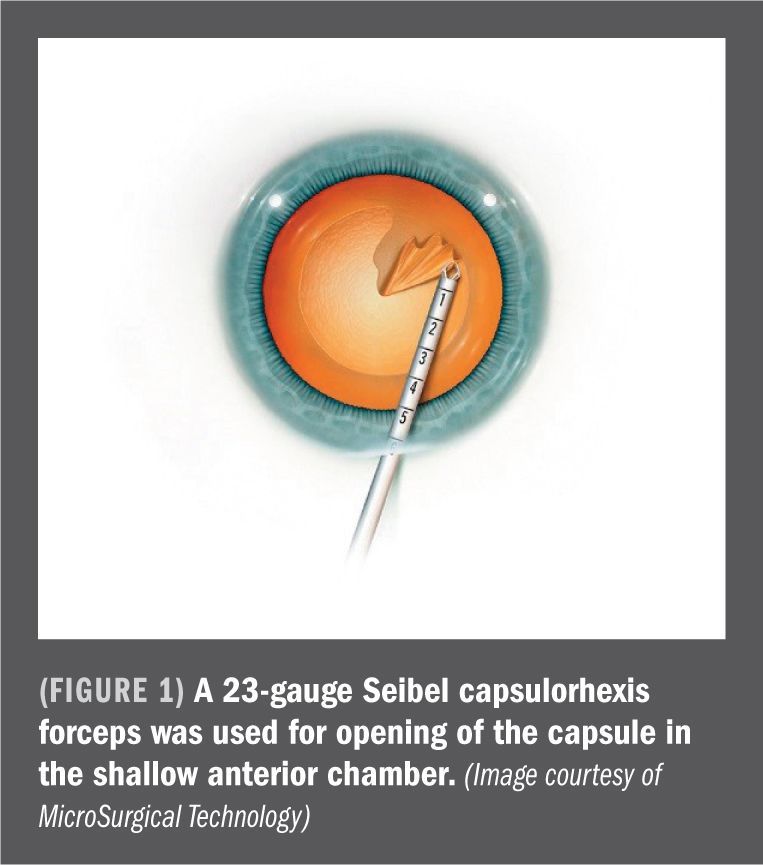
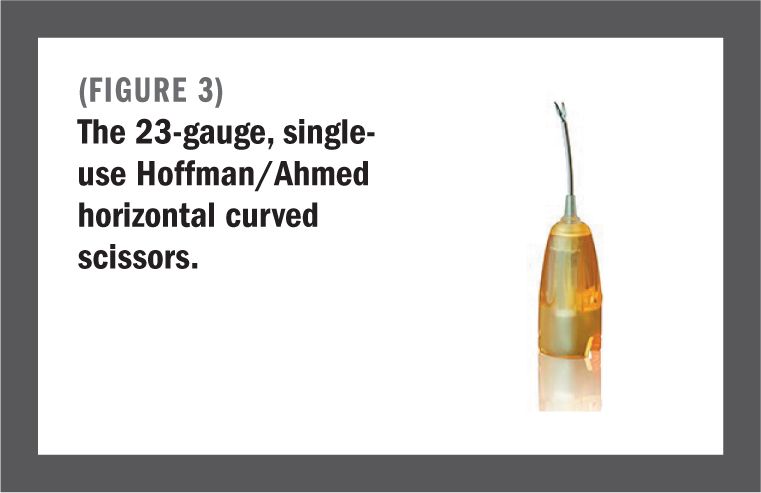
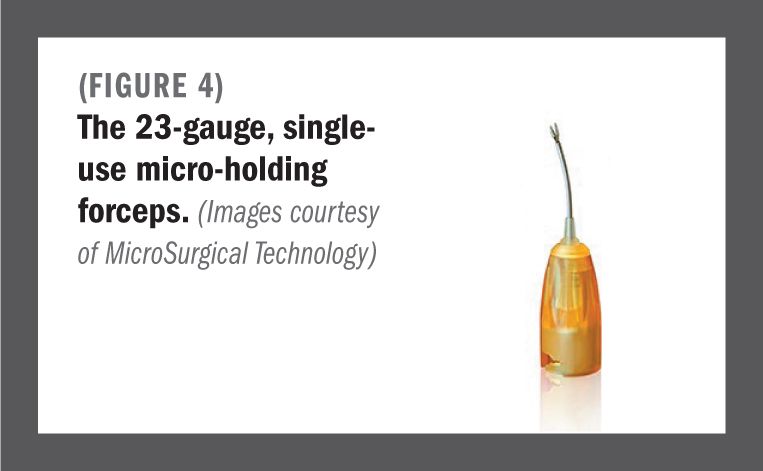
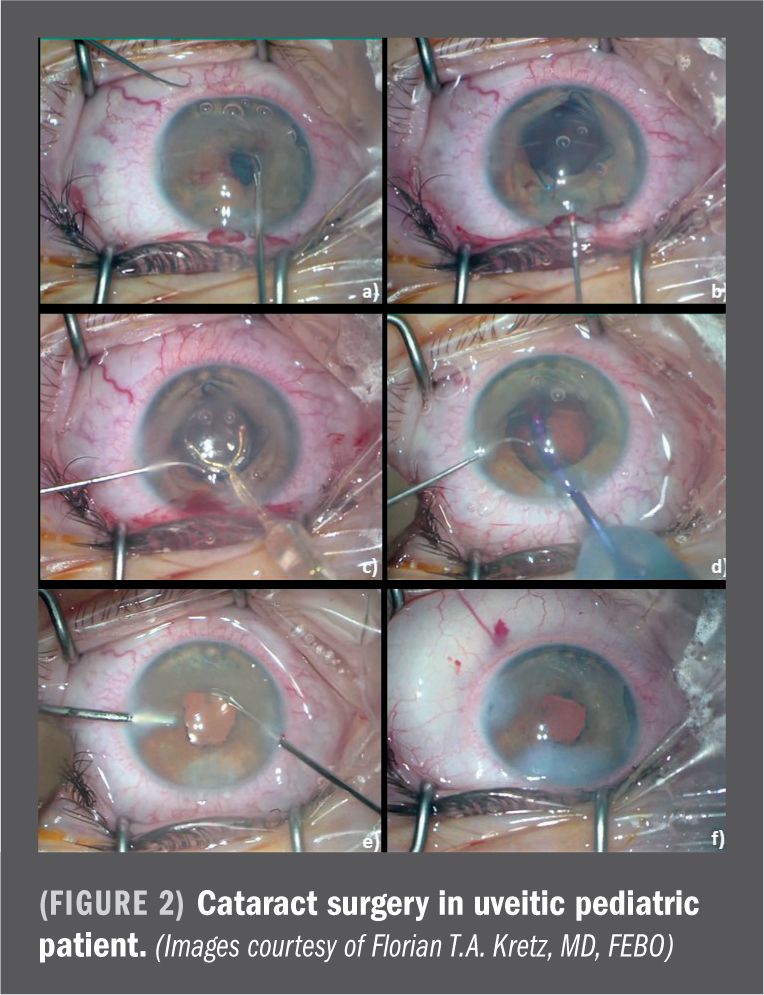
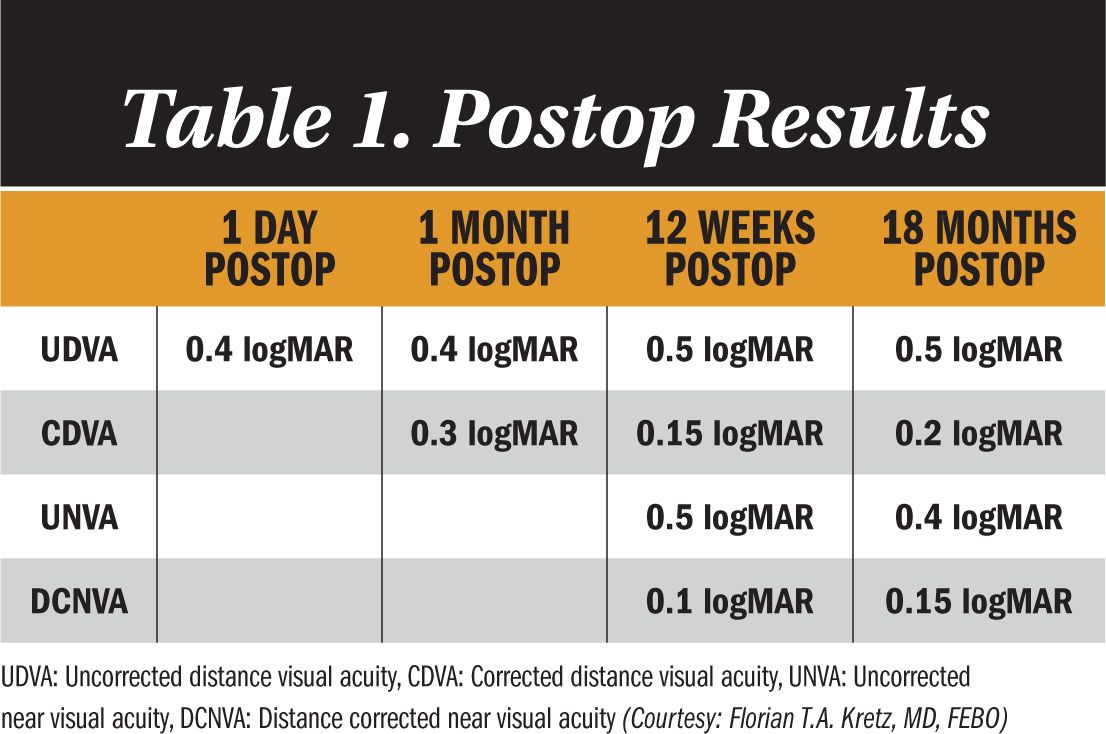
Pediatric cataract surgery presents challenges for surgeons due to the small size of the child’s eye. Low scleral rigidity also makes it difficult to maintain the chamber during surgery.
Opacification of the crystalline lens can lead to vision loss and an impaired quality of life for any patient. In pediatric congenital cataract, this can be a frightening experience for the child and treatment will involve both patient and parents.
“Pediatric cataract surgery is different from adult cataract surgery, mainly due to the small size of the child’s eye, with an axial length of 16.4 mm instead of 24 mm on average in adults, and the anterior chamber is only about 2 mm deep,” said Hee-Jung Park, MD, MPH, assistant professor of ophthalmology, Zanvyl Krieger Children’s Eye Center, Wilmer Eye Institute, Johns Hopkins University School of Medicine, Wilmer Eye Institute, Baltimore.
The low scleral rigidity makes it difficult to maintain the chamber during surgery. In children, the sclera is about four times more pliable and has only half the tensile strength of the adult sclera.”1
Case experience
To date, congenital cataract has been one of the most challenging surgeries I have performed. Two of my cases discussed here were both challenging and difficult.
However, I have found that microinstruments (MicroSurgical Technology [MST]) deliver a confident ability to perform a smoother, more-controlled surgery.
David Yorston, FRCOphth, Moorfield’s Eye Hospital, London, suggests that the exact cause may be unknown for many cases of childhood cataract, but there can often be associated systemic condition, such as:
- Prenatal (intrauterine) infection, e.g., rubella, cytomegalovirus, syphilis.
- Prenatal (intrauterine) drug exposure, e.g., corticosteroids, vitamin A.
- Prenatal (intrauterine) ionizing radiation, e.g., x-rays.
- Prenatal/perlnatal metabolic disorder, e.g., maternal diabetes.
- Hereditary (isolated - without associated eye or systemic disorder), e.g., autosomal dominant inheritance.
- Hereditary with associated systemic disorder or multisystem syndrome.
- Chromosomal, e.g., Down’s syndrome (trisomy 21), Turner’s syndrome.
- Skeletal disease or muscle disorder, e.g., Stickler syndrome, Myotonic dystrophy.
- Central nervous system disorder, e.g., Norrie’s disease.
- Renal disease, e.g., Lowe’s syndrome, Alport’s syndrome.
- Mandibulo-facial disorder, e.g., Nance-Horan cataract-dental syndrome.
- Dermatological disorder, e.g., congenital icthyosis, Incontinentia pigmenti.2
Where unilateral cataracts are not inherited or associated with a systemic disease, they are usually the result of local dysgenesis and may be associated with other ocular dysgenesis, such as persistent fetal vasculature (PFV), posterior lenticonus, or lentiglobus.3
Case 1: Unilateral Congenital Cataract
A 6-year-old boy presented to me with unilateral congenital cataract with a refraction of + 8 D and a preoperative best-corrected distance visual acuity (CDVA) of 0.5 logMAR.
After having been sent away from two other clinics, the child’s parents approached me looking for a solution to their child’s vision problems. Cataract surgery in such a case is challenging because of added issues, such as increased scleral elasticity, thicker corneas, and eye rubbing.
Adding to the challenge, during surgery, children placed under general anesthetic tend to turn up their eye globe which makes the anterior segment of the eye squashed for space. With limited space, the surgery csn be difficult.
Postoperatively, other issues such as reduced compliance with activity restriction, and the effect of postoperative astigmatism on amblyopia also must be considered.
IOL selection was also a challenge because the child was hyperopic. The choice of lens power is paramount to visual rehabilitation and a lens that leaves a blurred retinal image should be avoided.
The choice of IOL power should be individualized based on the child’s need and refractive status of the other eye in unilateral cases.4
In recent years, acrylic IOLs have gained popularity over polymethyl methacrylate (PMMA) IOLs, which had remained the IOL of choice for many years.5-7
In children, hydrophobic acrylic IOLs are considered better than PMMA IOLs in terms of greater biocompatibility and smaller incision size with use of foldable design, with late onset and a lower rate of posterior capsule opacification (PCO) formation.
Hydrophobic acrylic IOLs are used by 93% of pediatric cataract surgeons.4
In children with uveitic cataracts, decreased postoperative inflammation has been reported with the use of heparin-surface-coated PMMA IOLs.8
I targeted this case as slightly hyperopic, matching the refraction of the fellow eye. The IOL (IC-8, AcuFocus) had a power of + 27.5 D, and a target refraction of +1.32 D, using the Hoffer Q formula. An iris hook was used to gently open the iris due to posterior synechia and pupil dysgenisia.
Microforceps had to be used through different side ports. A forceps (23-gauge Seibel Capsulorhexis Forceps, MicroSurgical Technology) was used for opening of the capsule in the shallow anterior chamber (Figure 1).
This instrument is designed to minimize ophthalmic viscosurgical device (OVD) loss to maintain stable anterior chamber, as well as provide greater visibility and control of capsulorhexis, especially in eyes with a shallow anterior chamber.
As the shaft is stable, the branches can be moved to allow optimal control over the capsulorhexis.
Surgery was successful, and postoperative results are illustrated in Table 1.
At the 12-week postoperative visit, manifest refraction was measured as +4.00/–3.00 × 43, with a corrected visual acuity of 0.15 logMAR at distance and 0.1 logMAR at near.
With the last visit in October, the patient and his parents are satisfied with the results and refraction has decreased to +3.00/–2.50 × 52 and a corrected visual acuity of 0.2 logMAR at distance.
The surgery was performed in 2016, and the follow-up was 18 months postoperatively.
Case 2: Uveitic Patient with Cataract
A 5-year-old boy had a unilateral congenital cataract. Like the first child, he had been turned away from a clinic and a university for treatment. He had uveitis with pupillary membrane. The whole pupil was clogged with a dense fibrin membrane.
The boy’s vision had been decreased to hand movements from 0.5 logMAR over the previous 24 months.
During surgery (Figure 2), I used the 23-gauge, curved scissors (Hoffman/Ahmed horizontal curved scissors, MicroSurgical Technology) (Figure 3) to cut the pupillary membrane and inserted a Malyugin Ring 2.0, which was easy to use, expanding the pupil up to 6 mm and protecting the iris from damage.9
I proceeded with the irrigation port and performed the anterior capsulotomy with the capsulotomy system (Zepto, Mynosys) to open the lens capsule and perform the cataract surgery.
The IOL (CT Lucia 211P, Carl Zeiss Meditec) with a power of + 28 D was implanted, with a target refraction of +0.35 D using Barrett formula.
For this surgery, I chose this IOL type because it is hydrophobic acrylic IOL with imbedded heparin surface coating to prevent further inflammation. With the capsulotomy system, an element surrounded by a silicone plastic shell is attached to a suction tube, and introduced into the eye via a tiny incision (2.2 to 2.4 mm).
As Mark Packer, MD, suggests, the silicone shell squeezes down and there is a push rod inside the silicone sleeve used to expand the ring to a circle, and nitinol retains it back to a circle. Pulling the push rod out, you retract it and turn on the suction and the whole thing sucks itself down onto the anterior capsule.10
The capsulotomy system is fast and easy to use and offers a precise capsulotomy opening with a higher stability compared with manual capsulotomy.
In the anterior chamber, I carefully grabbed the pupillary membrane in the center and lifted it.
Then I made a hole at the iris membrane margin and filled viscoelastic behind the pupillary membrane and went in with the instrument to loosen any deposits (synechiae) behind the membrane, then filled it up again with viscoelastic so the membrane comes up in the anterior chamber.
From the left side port, I entered again with 23-gauge, micro-holding forceps (Figure 4, Page 14), lifted up the membrane, and on the other side, I came in with the curved scissors (Hoffman/Ahmed), which are exchangeable.
When dealing with complicated cases, I find it much easier to use the MST handle, which is compatible with all exchangeable single-use heads that can be opened from the packaging when needed.
With the exchangeable 360 handle (MST), the direction of the instrument can be turned, so I was able to cut around the whole pupil just by turning the scissors in the right direction.
This benefit allowed flexibility and ease of use intraprocedure. The development of fine-gauge instruments, especially the scissors and forceps, helps in chamber stability.11
At one day postoperatively, uncorrected vision was measured as 0.5 logMAR. At postoperative day four, best-corrected visual acuity was 0.2 logMAR. The child has chronic uveitis, for which he is prescribed topical steroid treatment, but overall his vision has vastly improved from hand movements before surgery. Therefore, his quality of life has improved.
At three months after surgery, the uveitis was under control with topical dexamethasone drops, uncorrected visual acuity is 0.4 logMAR which is improved to 0.2 logMAR with correction.
The child’s mother has reported being very happy with the surgical outcomes.
Possible complications or risks postoperatively include glaucoma, retinal detachment, infection and the need for more surgeries. In my opinion, the use of single-use instruments may offer surgeons the potential to reduce some of these risks, especially in the pediatric cases.
Discussion
Both cases are similar in that both were very small eyes in children who were close in age.
Pediatric cataract surgery is a challenge because the eyes are small and there is less space to maneuver. This is where precise, fine instruments are required to access the anterior chamber.
For instance, in cases with uveitis with pupillary membrane you need a forceps intraprocedure to hold the membrane on one side and then the curved scissors in the other hand to open the membrane. It is easy to turn the head of the scissors instead of having to turn the whole instrument in your hand.
Instruments
Such pediatric cases with a complete membrane in the pupil area are rare, and consequently, I do not hold a set of reusable surgical instruments. As a result, disposable instruments were used for these two surgeries.
With disposable instruments, I am certain to have a sterile instrument and scissors with a sharp blade as well as single-use forceps which will hold tight and not be damaged. Being able to easily exchange just the head of the instruments is ideal as I do not require a whole set of instruments.
There is a higher risk of damage with traditional instruments as they are frequently re-sterilized and handled more often than disposable instrumentation.
With a wider selection of disposable tips for microinstruments available, there is a greater choice. It also helps to know you can carry out what you are planning with the new instruments. Single-use promises they will not be broken or damaged from re-use.
So, I find disposable instruments to be more practical and safer
Disclosures:
Florian T.A. Kretz, MD, FEBO
E: F.Kretz@augenklinik.de
Dr. Kretz is affiliated with Augentagesklinik Rheine, Germany. Dr. Kretz did not indicate proprietary interests in the subject matter.
References:
1. Meszaros L. Congenital cataract still a challenge. Ophthalmology Times. 2012. http://www.ophthalmologytimes.com/modern-medicine-now/congenital-cataract-still-challenge
2. Yorston D, Wood M, Foster A. Results of cataract surgery in young children in East Africa. Br J Ophthalmol. 2001;85:267–271.
3. Heidar K, et al. Cataracts in Children, Congenital and Acquired. American Academy of Ophthalmology. 2017. http://eyewiki.aao.org/Cataracts_in_Children,_Congenital_and_Acquired
4. Medsinge A, Nischal KK. Pediatric cataract: challenges and future directions. Clin Ophthalmol. 2015;9:77-90.
5. Wilson ME, Trivedi RH. Choice of intraocular lens for pediatric cataract surgery: survey of AAPOS members. J Cataract Refract Surg. 2007;33:1666-1668.
6. Ram J, Jain VK, Agarwal A, Kumar J. Hydrophobic acrylic versus polymethyl methacrylate intraocular lens implantation following cataract surgery in the first year of life. Graefes Arch Clin Exp Ophthalmol. 2014;252:1443-1449.
7. Rowe NA, Biswas S, Lloyd IC. Primary IOL implantation in children: a risk analysis of foldable acrylic v PMMA lenses. Br J Ophthalmol. 2004; 88:481-485.
8. Basti S, Aasuri MK, Reddy MK, Preetam P, Reddy S, Gupta S, et al. Heparin-surface-modified intraocular lenses in pediatric cataract surgery: prospective randomized study. J Cataract Refract Surg. 1999;25:782-787.
9. Malyugin B. Managing small pupils: A surgeon’s step-wise approach to treatment. Ophthalmology Times Europe. 2015.
10. Stephenson M. Devices Focus, New Devices in Cataract Surgery. Eye World. 2018. https://www.eyeworld.org/new-devices-cataract-surgery
11. Kumar Khokhar S, Pillay G, Agarwal E, Mahabir M. Innovations in pediatric cataract surgery. Indian J Ophthalmol. 2017;65:210-216.
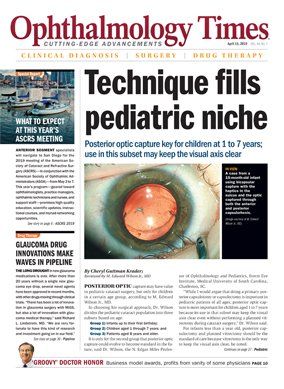
Newsletter
Don’t miss out—get Ophthalmology Times updates on the latest clinical advancements and expert interviews, straight to your inbox.





